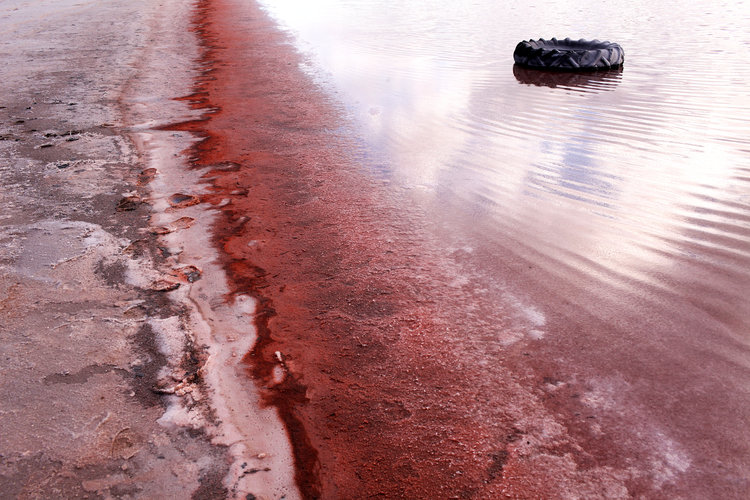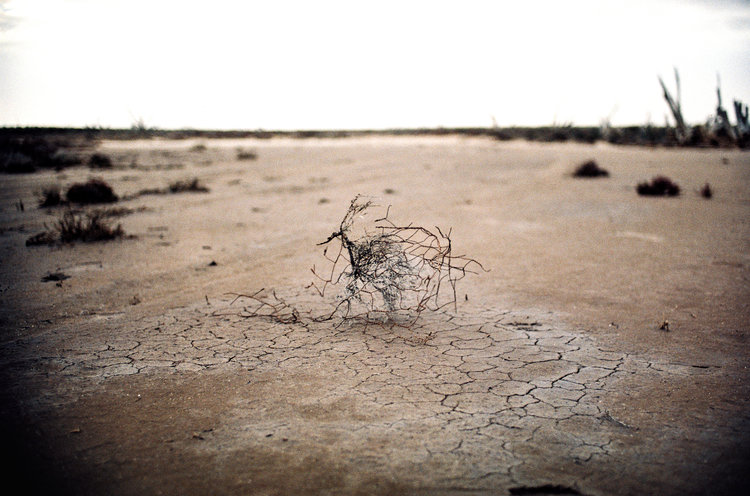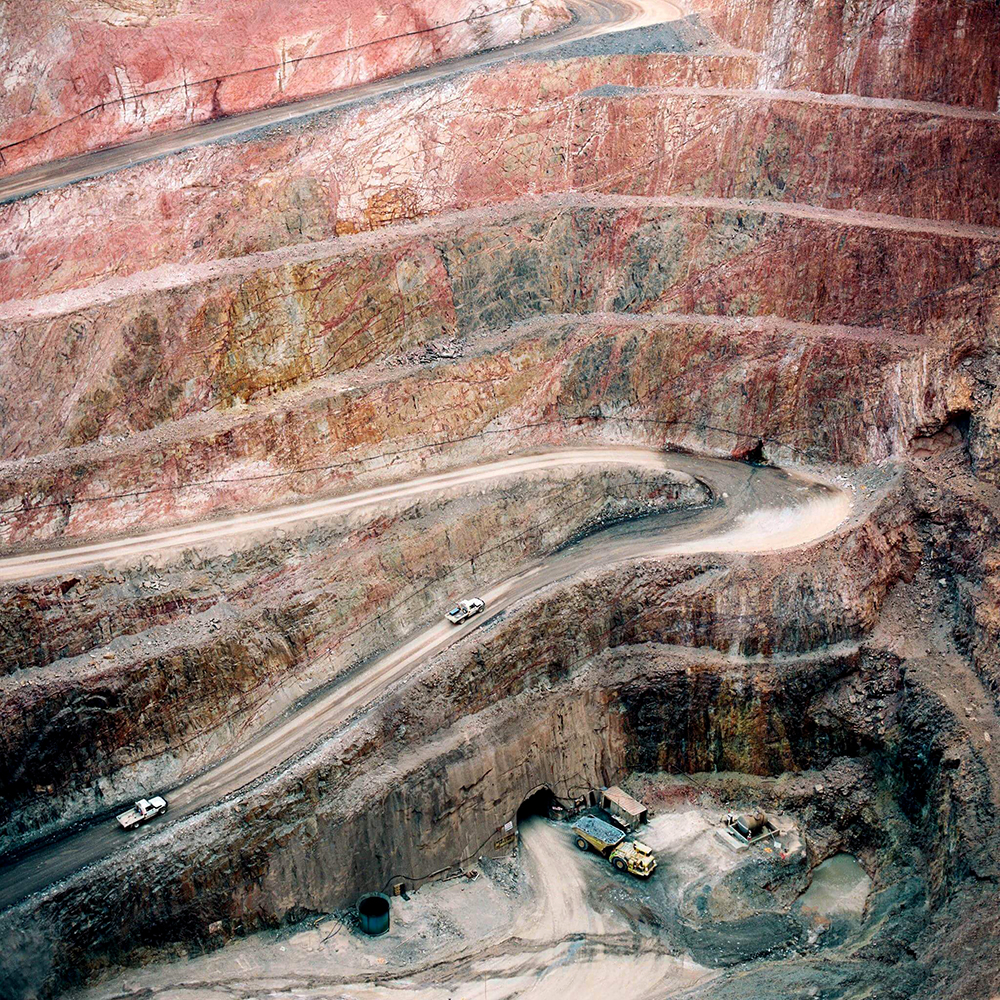It was intuition rather than rigorous research that informed my decision to develop an exhibition that explores ‘humanity’s relationship with the environment’ for my first solo-curated show. I certainly had my doubts about the concept, namely whether the exhibition could actually have an impact on the subject I am seeking to visually represent. Undertaking research has since revealed to me that my intuition was correct; there is a valid intersection between art and climate awareness, as art can function as a unique communicative tool.
Selecting works for the exhibition was driven by my interest in creating an atmosphere that captures the complexity of climate change, as well as selecting works that convey a relatable message so that the exhibition resonates with a diverse audience. A part of me was worried that expressing complex ideas through simplification and symbolism might undermine the seriousness of climate change. Whilst I have accepted that the exhibition might not speak to everyone, I found encouragement within the words of author JM Ledgard, he stating, ‘the very unguardedness of art, its intuition, and the fact that it works through wordless light, colour, shade, form and space gives it a separate authority’. Ledgard believes that art has a unique function in communicating complex and often repeated information relating to climate change.

I had Ledgard’s insight in mind whilst spending time in the studio of Melbourne-based photographer Marcelle Bradbeer in preparation for the exhibition. Discussing her process and her works revealed that her serene images of human-made objects within a predominantly natural landscape are intentionally “beautiful”, she commenting that ‘art can capture something that is not necessarily beautiful, but can portray it in a beautiful way in order to make viewers feel uncomfortable for feeling attracted to it at first’. Marcelle harnesses beauty so that objects such as a tyre, a truck and barbed wire become the the focal point within her work, despite the predominance of the natural landscape. She went on to say that within the rural contexts she chooses to photograph, ‘you can’t take the man-made object for granted as it is so apparent against an otherwise natural landscape, unlike in the urban setting where it saturates the landscape to the extent that you can even forget nature persists within it.’ The unique combination of aesthetics, ambiguity and careful visual cues offers an opportunity for viewers to experience information and then interpret it, a process of self-learning that allows information to become knowledge in the most genuine and deep-seated way.
The experience of the viewer is integral to the purpose of exhibition-making; arguably, it could be art’s leading social value. I believe that art innately acknowledges the diversity of people in that it leans into the subjectivity of experience, rather than trying to make everyone understand the same thing in the same way. I found my understanding of art’s unique educational function echoed in the research of Professor Mike Hulme, who has found that the arts occupies a unique and important position in influencing proactive responses to climate change within society. Hulme notes that the concept of climate change is so large, complex and relatively slow-moving for humans that members of the public tend to have a perception that it does not and will not directly affect them. Despite the circulation of facts relating to climate change, raw data and apocalyptic imagery of the future have shown to be counterproductive when disseminated into the public sphere. Research has shown that instead of shocking us into action, information about our earth’s future is more likely to arouse feelings of apathy, denial and resignation. Hulme concludes that through the skill of artists, who can create compelling visual imagery, there is more chance that the public will actively engage with the concept of climate change and subsequently have an emotional response that evokes empathy rather than apathy.

I have been moved by the power of empathy that is demonstrated within the success of a participatory artwork by Dierdre Nelson that was based on the Isle of Mull in the summer of 2012. The work draws upon the experience of migratory seabirds whose habitat is affected by climate change. In a paper tracking participants and viewers of the sculptural work, Miriam Burke, David Ockwell and Lorraine Whitmarsh found that many who engaged with the work were increasingly understanding of the multifaceted implications climate change has on the ecosystem. One participant commented that they ‘learnt how critical one aspect of the bird’s life can be… It makes me think of the interdependence of wildlife and how ultimately in shortening other species’ lives, we are also reducing our own.’ What Burke, Ockwell and Whitmarsh found was that through locating climate change on a relatable level, the public experiences the severity of the situation, which is a simulated experience unique to the arts.
The ongoing impact an artwork has upon a viewer has not been mapped in any statistical way. However, I (once again) have an intuitive feeling that emotion lives on in you, long after the initial evocation. I have come to this understanding through my own experience, whereby I am well beyond having my first encounters with the works in the exhibition I am curating, but I find that their effect lives on in past and future conversations. Simultaneously, my research has prompted me to work towards lessening my carbon footprint. Reflecting upon how the exhibition has led me to understand a great deal about climate change leads me to think of Marshall McLuhan’s highly referenced concept, ‘the medium is the message’, in the sense that we are all capable of learning; we often just require the information to be expressed in a way that suits the individual mind. What I have taken away from McLuhan’s concept is that we must continue to put ourselves out there enough to find and return to our preferred platform; whether it be art, film, music, dance, theatre or literature, and subsequently allow ourselves to be moved in the right direction.
Curated by Sophie Prince, Nothing Ends or Begins brings into focus humankind’s position within the climate crisis. Through the work of four Melbourne-based artists – Marcelle Bradbeer, Jade Crumpler, Genevieve Douglas-Byrnes and Caitlin O’Grady – the exhibition invites contemplation upon the kind of relationship we can have with nature. The exhibition takes place at the George Paton Gallery at the University of Melbourne from 29 August to 7 September 2018. For more information, visit the gallery website.
Banner image courtesy of Marcelle Bradbeer: Cobar Open Cut Mine, 2017, Archival Inkjet Print.


Leave a Reply